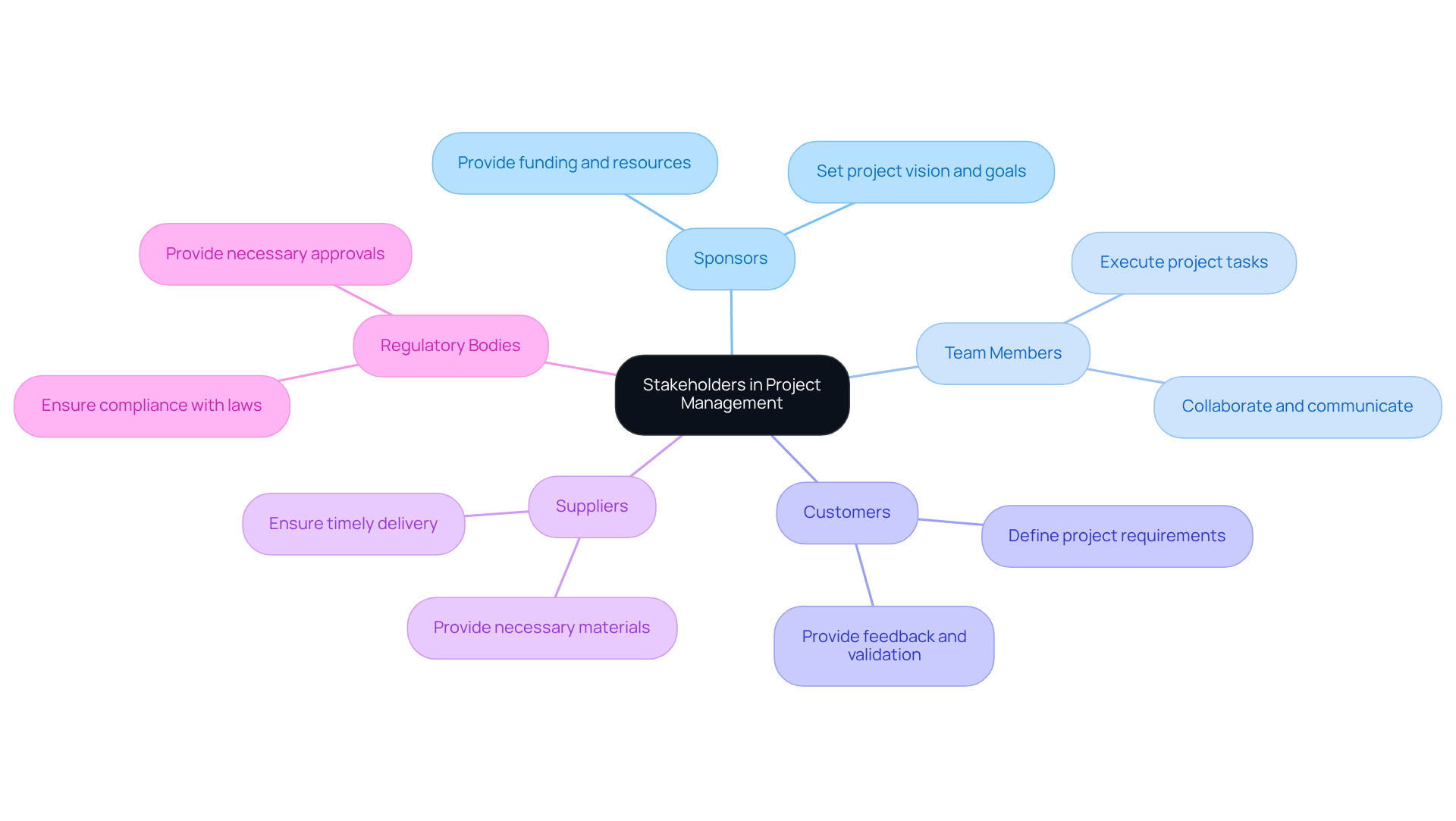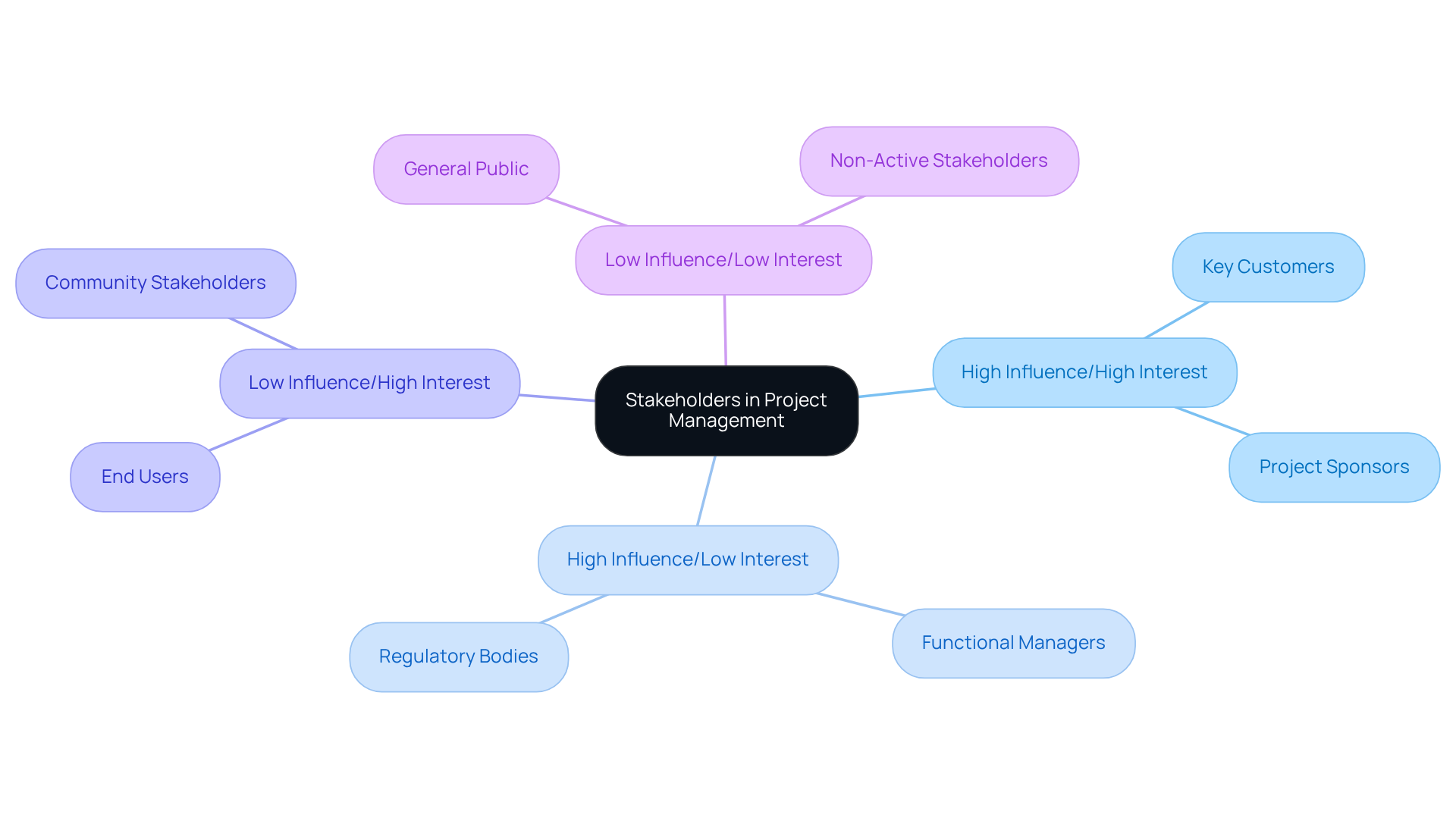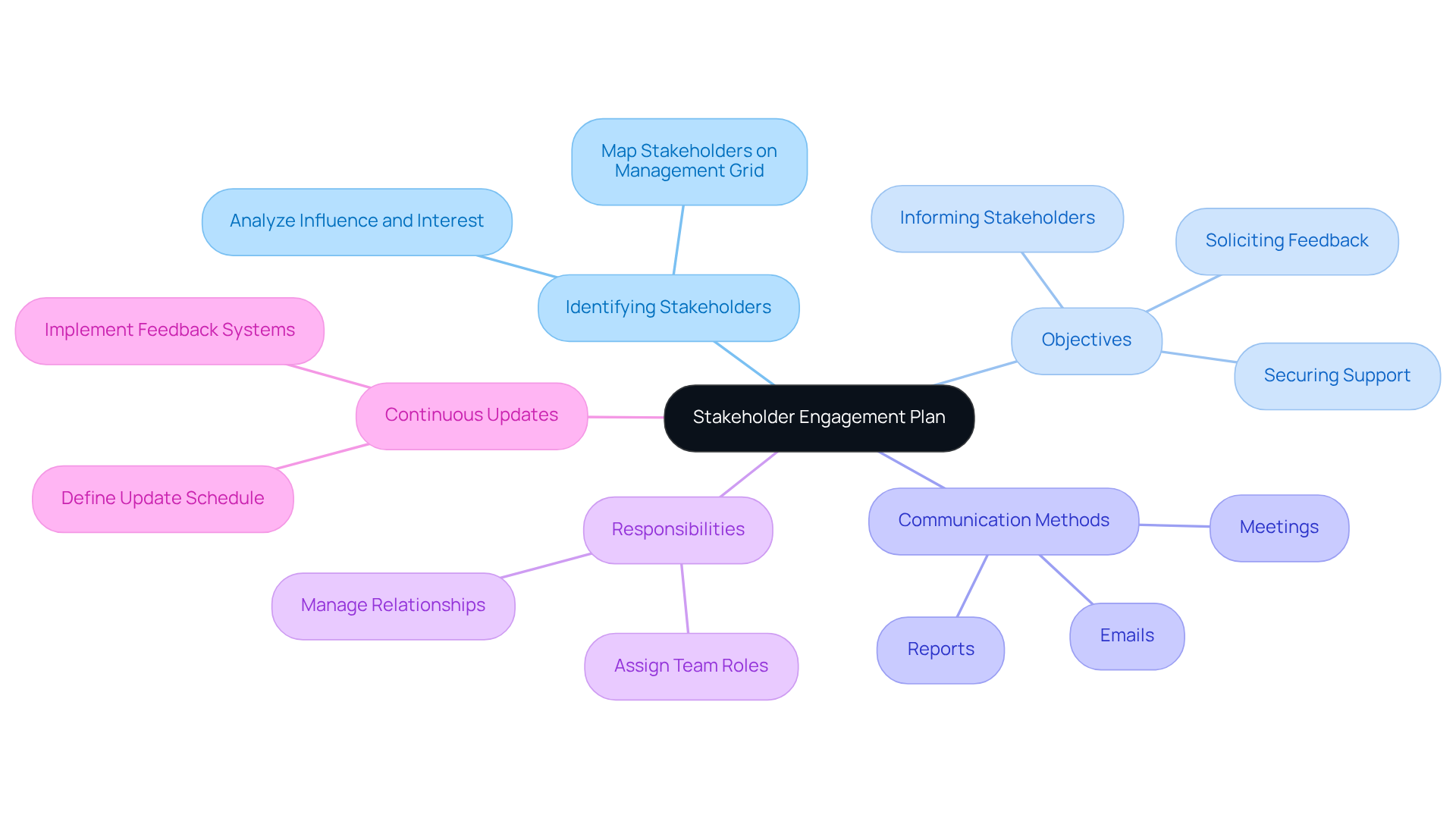Overview
Effective stakeholder involvement in project management is crucial for ensuring project success. It aligns objectives and harnesses diverse perspectives and resources. This article outlines a systematic approach to identifying, analyzing, and engaging stakeholders. It emphasizes the importance of communication, relationship-building, and ongoing feedback. These elements foster cooperation and trust throughout the project lifecycle.
Introduction
Navigating the complex landscape of project management demands a keen understanding of stakeholders—those pivotal individuals and groups whose interests can significantly sway a project's trajectory. Effective stakeholder involvement not only enhances collaboration but also mitigates risks, paving the way for successful outcomes. The challenge, however, lies in identifying these stakeholders, understanding their diverse needs, and fostering meaningful engagement throughout the project's lifecycle.
How can project managers master the art of stakeholder involvement to ensure alignment and drive success? This question invites reflection on the critical role of strategic engagement in achieving project objectives.
Define Stakeholders and Their Importance in Project Management
Stakeholders are individuals or groups who possess a vested interest in the outcome of an endeavor. This diverse group encompasses:
- Sponsors
- Team members
- Customers
- Suppliers
- Regulatory bodies
Recognizing the significance of stakeholder involvement in project management is essential; their support can lead to success, while their opposition may result in delays or setbacks. The involvement of stakeholders in project management provides valuable perspectives, resources, and assistance, making their participation critical from the initiative's inception to its completion. Understanding their needs and expectations aids in aligning objectives with participant priorities, ultimately fostering stakeholder involvement in project management to achieve a more successful outcome.

Identify and Analyze Stakeholders
To effectively recognize interested parties in stakeholder involvement in project management, begin by compiling a comprehensive list of individuals and groups who may be impacted by or have an influence on the project. Once identified, assess each participant's level of influence and engagement using a strategic matrix. This matrix categorizes stakeholders into four distinct groups:
- High influence/high interest
- High influence/low interest
- Low influence/high interest
- Low influence/low interest
Such an organized examination is instrumental in prioritizing stakeholder involvement in project management, ensuring that those with the most significant influence on the initiative are addressed first.
As Barbara Kephart, a UC Berkeley-certified project manager, emphasizes, "Stakeholders are people first; understanding their needs builds the foundation for trust." To further enhance your understanding of stakeholder needs, consider conducting interviews or surveys. These methods can yield valuable insights into their expectations and concerns, which are crucial for developing effective engagement strategies. For instance, in Case Study A, the manager recognized the importance of including key customers in planning discussions to align objectives effectively.
By acknowledging the diverse interests and impacts of involved parties, managers can enhance stakeholder involvement in project management, fostering cooperation and establishing trust, which ultimately leads to more seamless execution and improved results. Confidence and openness are ongoing commitments throughout the initiative, as highlighted in external references, and are vital for sustaining participant involvement.

Create a Stakeholder Engagement Plan
Developing a strategy for stakeholder involvement in project management is essential for fostering efficient communication and active participation throughout the lifecycle of the endeavor. Begin by identifying and analyzing interested parties to understand their influence and engagement in the project. Clearly articulate the objectives of your stakeholder involvement in project management, which may encompass:
- Informing stakeholders
- Soliciting their feedback
- Securing their support
Our approach initiates with a comprehensive business assessment to align key participants and gain a deeper understanding of the business context beyond mere figures. This foundational step enables us to uncover underlying business challenges and collaboratively devise a plan to address weaknesses while bolstering key strengths.
Identify the communication methods that will be utilized, such as:
- Meetings
- Emails
- Reports
Establish a defined schedule for updates to sustain engagement. Assign specific responsibilities to team members for managing relationships with interested parties, ensuring accountability and clarity in roles. Additionally, implement feedback systems to promptly address concerns and suggestions from stakeholders, as this will improve stakeholder involvement in project management and foster a two-way communication channel.
Consider mapping participants on a management grid to illustrate their roles and impact within the initiative. This plan should be viewed as a dynamic document, regularly updated to reflect changes in participant dynamics and progress, thereby ensuring continuous relevance and efficiency. Integrate real-time analytics to monitor business performance and operationalize lessons learned from turnarounds. Ultimately, the goal is to cultivate enthusiasm and understanding regarding the initiative, benefiting all parties involved.

Implement Engagement Strategies and Foster Relationships
To effectively implement involvement strategies, begin with the execution of the previously established communication plan. Frequent updates on development progress are essential, as stakeholder involvement in project management requires actively seeking input from involved parties and addressing any issues promptly.
Employ a variety of engagement techniques, such as:
- Workshops
- Focus groups
- One-on-one meetings
to foster deeper relationships. The integration of technological resources, such as management software and collaboration platforms, significantly enhances communication and keeps participants informed.
Establishing strong connections with involved parties necessitates ongoing effort; therefore, stakeholder involvement in project management is essential to actively acknowledge their contributions and respond to their needs to sustain their support throughout the initiative. Notably, organizations that prioritize stakeholder involvement in project management often experience a marked improvement in project outcomes, with 62% of high-performing projects benefiting from robust stakeholder relationships.

Conclusion
Mastering stakeholder involvement in project management is crucial for achieving successful outcomes. By engaging stakeholders effectively, project managers can harness their insights, resources, and support, ultimately aligning project objectives with stakeholder expectations. This strategic approach not only mitigates risks associated with opposition but also enhances collaboration, fostering a sense of ownership among participants.
The article outlines essential steps for effective stakeholder involvement, including:
- Identifying and analyzing stakeholders
- Creating a comprehensive engagement plan
- Implementing targeted strategies to foster relationships
Key insights emphasize the importance of understanding stakeholder needs, utilizing a structured matrix for prioritization, and employing diverse communication methods to maintain engagement. By regularly updating the engagement plan and incorporating feedback, project managers can adapt to changing dynamics, ensuring that all voices are heard and valued throughout the project lifecycle.
In conclusion, prioritizing stakeholder involvement is not merely a best practice; it is a fundamental component of project success. As organizations strive for excellence in project management, embracing these strategies will lead to improved outcomes and stronger relationships. It is imperative for project managers to take action now, leveraging the power of stakeholder engagement to navigate challenges and drive projects to successful completion.
Frequently Asked Questions
What are stakeholders in project management?
Stakeholders are individuals or groups who have a vested interest in the outcome of a project. This includes sponsors, team members, customers, suppliers, and regulatory bodies.
Why is stakeholder involvement important in project management?
Stakeholder involvement is crucial because their support can lead to project success, while their opposition can cause delays or setbacks. Their participation provides valuable perspectives, resources, and assistance throughout the project.
How can understanding stakeholders' needs and expectations benefit a project?
Understanding stakeholders' needs and expectations helps align project objectives with participant priorities, fostering their involvement and ultimately leading to a more successful project outcome.
When should stakeholders be involved in a project?
Stakeholders should be involved from the inception of the project through to its completion to ensure their perspectives and resources are utilized effectively.




